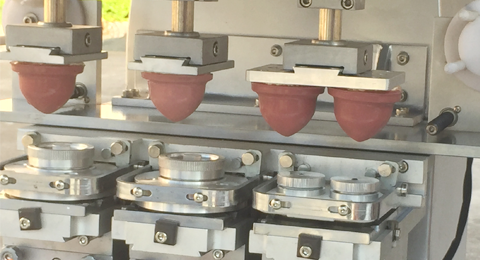Preparation for pad printing

Starting a pad printing workshop involves several preparation steps to ensure a smooth and successful setup. Here are some essential preparation jobs you should consider:
- Research and Planning:
- Conduct market research to understand the demand for pad printing services in your area and identify potential target industries or customers.
- Determine the scope of your workshop, including the size of your operation, the types of substrates and products you will be printing on, and the printing techniques you will offer.
- Develop a comprehensive business plan that outlines your goals, financial projections, marketing strategies, and operational details.
- Equipment and Supplies:
- Identify the necessary pad printing equipment you will need, such as pad printing machines, curing systems, exposure units, and plate-making equipment.
- Research and select reputable suppliers or manufacturers for your equipment. Obtain quotes and compare prices, features, and warranties.
- Stock up on essential supplies like pad printing inks, cleaning solvents, substrates, silicone pads, pad printing plates, and other consumables.
- Workspace Setup:
- Determine the space requirements for your pad printing workshop based on the size of the equipment and the production volume you anticipate.
- Ensure your workspace has proper ventilation, lighting, and electrical outlets to accommodate the equipment and meet safety regulations.
- Set up workstations with adequate space for plate making, ink preparation, printing, and post-printing processes like curing or drying.
- Regulatory and Legal Considerations:
- Research and comply with local, state, and national regulations related to operating a printing business, including permits, licenses, and zoning requirements.
- Ensure you meet safety standards for handling chemicals, ventilation, and workplace safety.
- Training and Skill Development:
- Acquire the necessary knowledge and skills in pad printing. Attend training courses or workshops offered by industry experts or equipment manufacturers.
- Familiarize yourself with the equipment manuals and operational procedures. Practice setting up the machines, making plates, and performing test prints.
- Marketing and Branding:
- Develop a strong brand identity, including a name, logo, and tagline, that resonates with your target market.
- Create a professional website that showcases your services, capabilities, and contact information.
- Develop marketing materials such as brochures, business cards, and sample prints to promote your workshop.
- Utilize online and offline marketing channels to reach potential customers, such as social media, industry trade shows, and local business directories.
- Financial Planning and Budgeting:
- Determine your startup costs, including equipment, supplies, workspace setup, and initial inventory.
- Prepare a financial plan and budget that covers your expenses, expected revenue, and cash flow projections for the first year of operation.
- Explore financing options if needed, such as loans or grants, to fund your workshop’s setup and initial operations.
Remember to consult with professionals, such as business advisors, accountants, or lawyers, to ensure compliance with regulations and make informed decisions throughout the preparation process.
Welcome contact DSTAR Machine for free consultancy.We will provide professional machine proposals.
 DSTAR machine
DSTAR machine

WeChat
Scan the QR Code with wechat